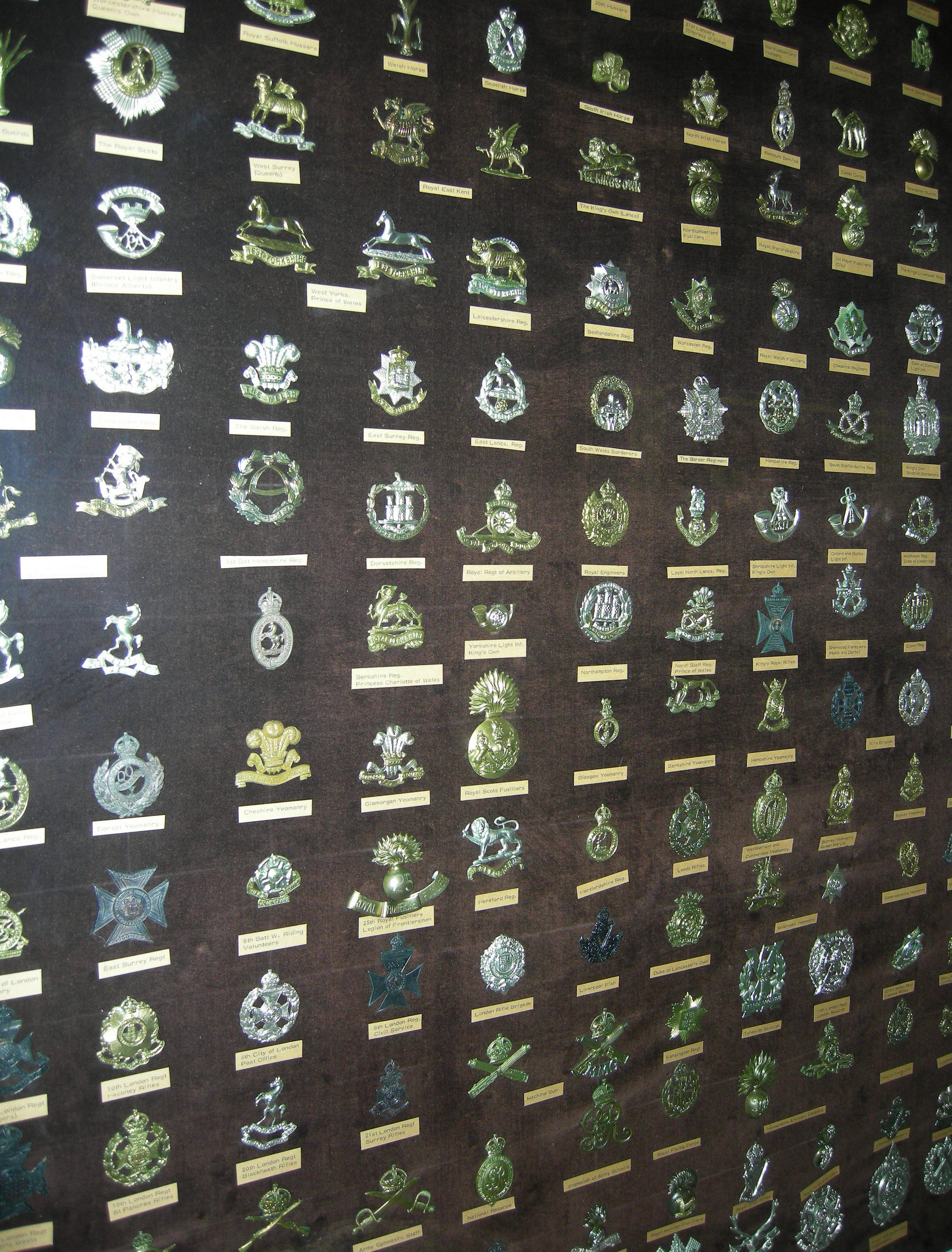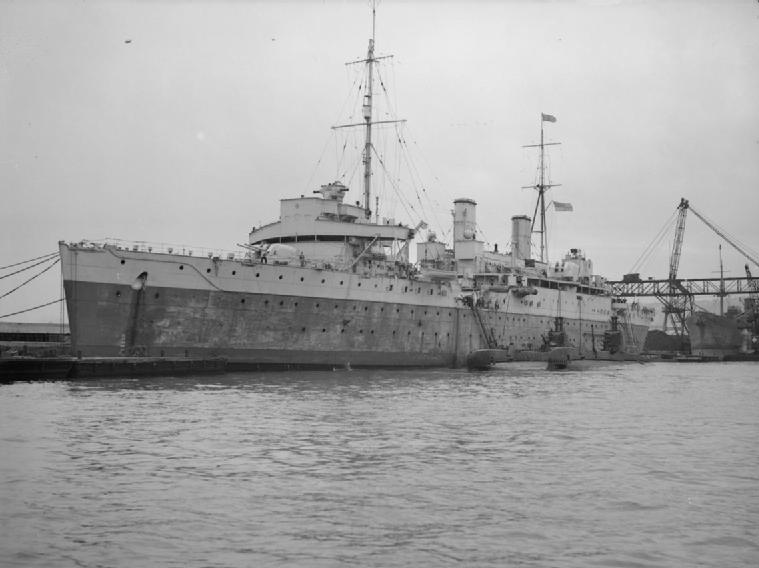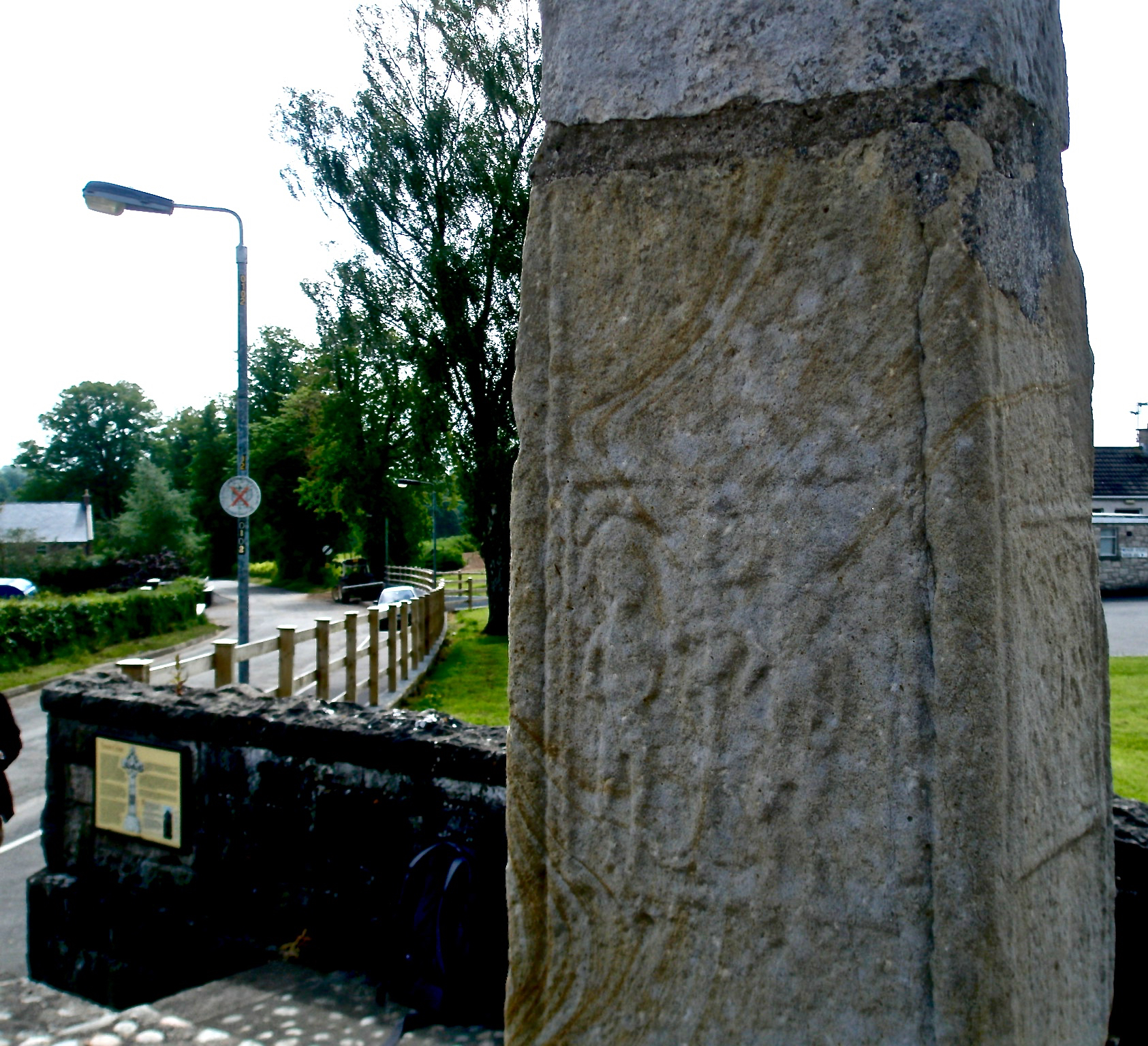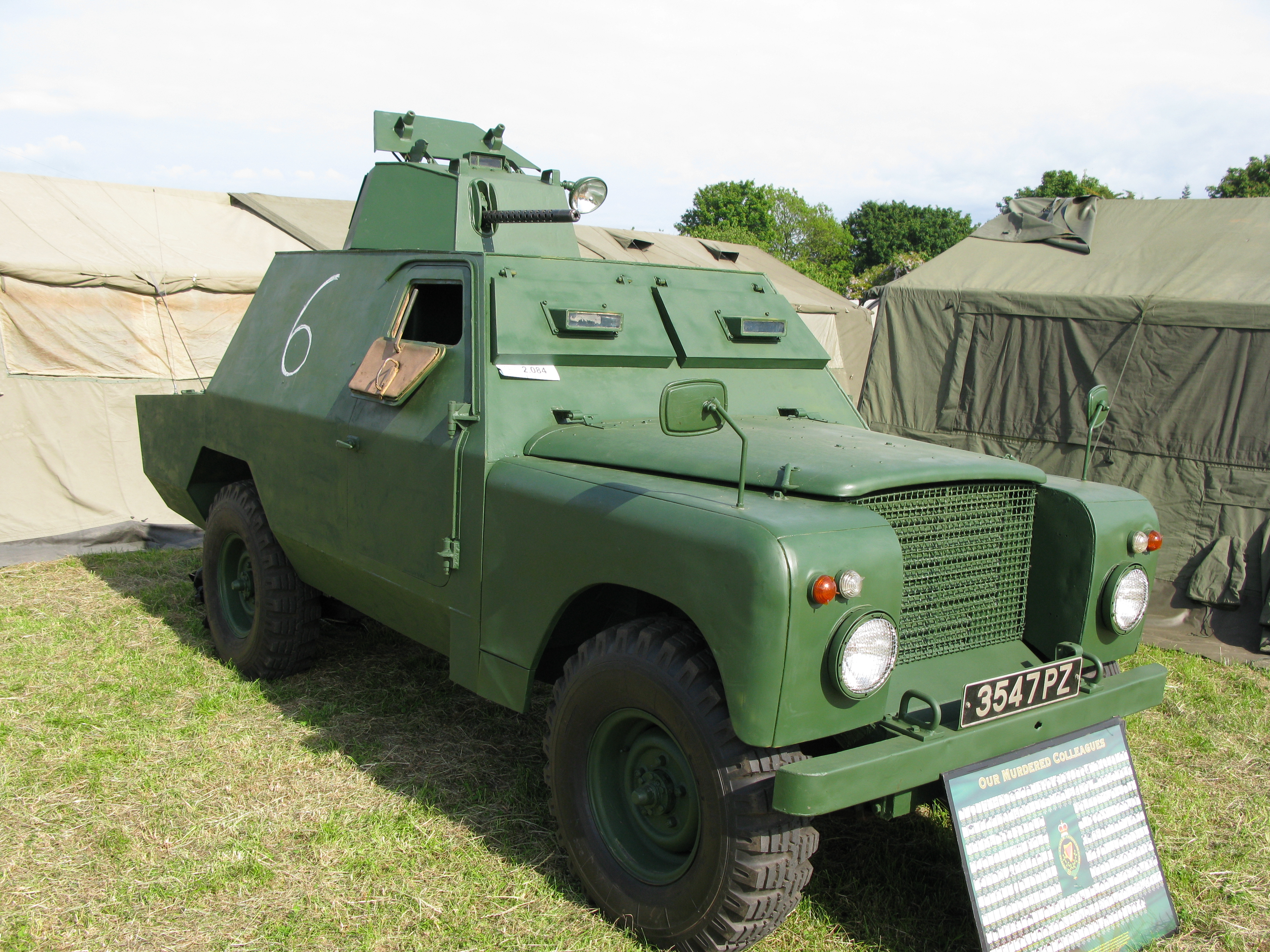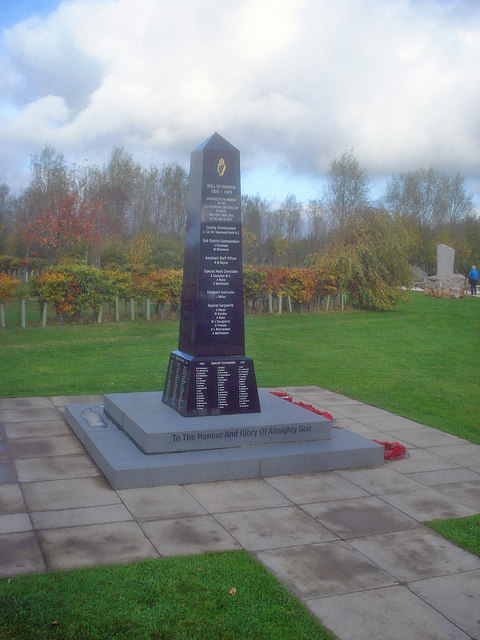|
Ulster Defence Regiment
The Ulster Defence Regiment (UDR) was an infantry regiment of the British Army established in 1970, with a comparatively short existence ending in 1992. Raised through public appeal, newspaper and television advertisements,Potter p25 their official role was the "defence of life or property in Northern Ireland against armed attack or sabotage" but unlike troops from Great Britain they were never used for "crowd control or riot duties in cities". At the time the UDR was the largest infantry regiment in the British Army, formed with seven battalions plus another four added within two years. It consisted mostly of part-time volunteers until 1976, when a full-time En cadre, cadre was added. Recruiting in Northern Ireland at a time of intercommunal strife, some of its (mostly Ulster Protestant) members were involved in sectarian killings. The regiment was originally intended to more accurately reflect the demographics of Northern Ireland, and began in 1970 with Catholic recruits accou ... [...More Info...] [...Related Items...] OR: [Wikipedia] [Google] [Baidu] |
Cap Badge
A cap badge, also known as head badge or hat badge, is a badge worn on uniform headgear and distinguishes the wearer's nationality and/or organisation. The wearing of cap badges is a convention commonly found among military and police forces, as well as uniformed civilian groups such as the Scouting, Boy Scouts, civil defence organisations, ambulance services (e.g. the St. John Ambulance Brigade), customs services, fire services etc. Cap badges are a modern form of Heraldic badge, heraldry and their design generally incorporates highly symbolic devices. Some badges that contain images of lions or other cats are sometimes informally referred to as cat badges. Instances in military forces British armed forces The British Armed Forces utilise a variety of metal and cloth cap badges on their headdress, generally on caps and berets. They are also worn on Uniforms_of_the_British_Armed_Forces#Turbans, Sikh turbans. British Army In the British Army (as well as other Commonwealth o ... [...More Info...] [...Related Items...] OR: [Wikipedia] [Google] [Baidu] |
Operation Demetrius
Operation Demetrius was a British Army operation in Northern Ireland on 9–10 August 1971, during the Troubles. It involved the mass arrest and internment (imprisonment without trial) of people suspected of being involved with the Provisional Irish Republican Army (IRA), which was waging an armed campaign for a united Ireland against the British state. It was proposed by the Unionist government of Northern Ireland and approved by the British Government. Armed soldiers launched dawn raids throughout Northern Ireland and arrested 342 in the initial sweep, sparking four days of violence in which 20 civilians, two IRA members and two British soldiers were killed. All of those arrested were Irish republicans and nationalists, the vast majority of them Catholics. Due to faulty and out-of-date intelligence, many were no longer involved in republican militancy or never had links with the IRA. Ulster loyalist paramilitaries were also carrying out acts of violence, which were ma ... [...More Info...] [...Related Items...] OR: [Wikipedia] [Google] [Baidu] |
Government Of The United Kingdom
His Majesty's Government, abbreviated to HM Government or otherwise UK Government, is the central government, central executive authority of the United Kingdom of Great Britain and Northern Ireland.Overview of the UK system of government : Directgov – Government, citizens and rights Archived direct.gov.uk webpage. Retrieved on 29 August 2014. The government is led by the Prime Minister of the United Kingdom, prime minister (Keir Starmer since 5 July 2024) who appoints all the other British Government frontbench, ministers. The country has had a Labour Party (UK), Labour government since 2024 United Kingdom general election, 2024. The ... [...More Info...] [...Related Items...] OR: [Wikipedia] [Google] [Baidu] |
Armagh
Armagh ( ; , , " Macha's height") is a city and the county town of County Armagh, in Northern Ireland, as well as a civil parish. It is the ecclesiastical capital of Ireland – the seat of the Archbishops of Armagh, the Primates of All Ireland for both the Roman Catholic Church and the Church of Ireland. In ancient times, nearby Navan Fort () was a pagan ceremonial site and one of the great royal capitals of Gaelic Ireland. Today, Armagh is home to two cathedrals (both named after Saint Patrick) and the Armagh Observatory, and is known for its Georgian architecture. Statistically classed as a medium-sized town by NISRA, Armagh was given city status in 1994 and Lord Mayoralty status in 2012. It had a population of 16,310 people in the 2021 Census. History Foundation ''Eamhain Mhacha'' (or Navan Fort), at the western edge of Armagh, was an ancient pagan ritual or ceremonial site. According to Irish mythology it was one of the great royal sites of Gaelic ... [...More Info...] [...Related Items...] OR: [Wikipedia] [Google] [Baidu] |
Tynan
Tynan ()PlaceNamesNI - Tynan is a village, townland (of 375 acres) and Civil parishes in Ireland, civil parish in County Armagh, Northern Ireland. The village, which is around west of Armagh, Armagh City, had a population of 71 people (35 households) as of the 2011 United Kingdom census, 2011 census. Geography The village and townland of Tynan lie in a civil parishes in Ireland, civil parish of the same name. The civil parish of Tynan contains the villages of Killylea, Middletown, County Armagh, Middletown and Tynan. It is situated largely in the Barony (Ireland), historic barony of Tiranny, with some areas in the barony of Armagh (barony), Armagh,History [...More Info...] [...Related Items...] OR: [Wikipedia] [Google] [Baidu] |
Gill & Macmillan
Gill is an independent publisher and distributor based in Dublin, Ireland. History In 1856, Michael Henry Gill, printer for Dublin University, purchased the publishing and bookselling business of James McGlashan, and the company was renamed McGlashan & Gill. In 1875, it was renamed M.H. Gill & Son. In 1968, the company became associated with the London based Macmillan Publishers Macmillan Publishers (occasionally known as the Macmillan Group; formally Macmillan Publishers Ltd in the United Kingdom and Macmillan Publishing Group, LLC in the United States) is a British publishing company traditionally considered to be on ... (founded 1843) and Gill & Macmillan was established. In 2013, the Gill family bought out Macmillan. Products Gill operates three distinct divisions - Gill Education, Gill Books and Gill Distribution. Gill Education is a schools publisher. Gill Books is an Irish-interest trade publisher. Gill Distribution provides warehousing and distribution facilities ... [...More Info...] [...Related Items...] OR: [Wikipedia] [Google] [Baidu] |
Ian Freeland
Lieutenant General Sir Ian Henry Freeland (14 September 1912 – 2 July 1979) was a senior British Army officer, who served with distinction during World War II and most notably served as General Officer Commanding (GOC) and Director of Operations in security matters in Northern Ireland in the aftermath of rioting in 1969, and the beginning of the Troubles. Early military career and Second World War Born in Milton, Hampshire, England on 14 September 1912, the son of Major-General Sir Francis Edward Freeland, a British Army officer, Ian Henry Freeland was initially educated at Wellington College, Berkshire. Then, after attending the Royal Military College, Sandhurst, Freeland was commissioned as a second lieutenant in the Norfolk Regiment ( Royal Norfolk Regiment from 3 June 1935) on 1 September 1932, and, after being posted to India to join the regiment's 1st Battalion, was promoted to lieutenant on 1 September 1935. Shortly after the outbreak of World War II in September 1 ... [...More Info...] [...Related Items...] OR: [Wikipedia] [Google] [Baidu] |
General Officer Commanding
General officer commanding (GOC) is the usual title given in the armies of the United Kingdom and the Commonwealth (and some other nations, such as Ireland) to a general officer who holds a command appointment. Thus, a general might be the GOC British II Corps (a three-star appointment) or GOC British 7th Armoured Division (a two-star appointment). GOC-in-C A general officer heading a particularly large or important command, such as Middle East Command or the Allied Armies in Italy, may be called a general officer commanding-in-chief (GOC-in-C). The governor of the Imperial Fortress colony of Bermuda was also appointed commander-in-chief of the disproportionately-large Bermuda Garrison. From 1912, when Lieutenant-General Sir George Mackworth Bullock replaced the late Lieutenant-General Sir Frederick Walter Kitchener, through the Second World War, the military office was titled ''General Officer Commanding-in-Chief, Bermuda''. GOC-in-Cs are usually one rank higher than a ... [...More Info...] [...Related Items...] OR: [Wikipedia] [Google] [Baidu] |
1969 Northern Ireland Riots
During 12–16 August 1969, there was an outbreak of political and sectarian violence throughout Northern Ireland, which is often seen as the beginning of the thirty-year conflict known as the Troubles. There had been sporadic violence throughout the year arising out of the Northern Ireland civil rights campaign, which demanded an end to discrimination against Catholics and Irish nationalists. Civil rights marches had been attacked by Protestant loyalists, and protesters often clashed with the Royal Ulster Constabulary (RUC), the overwhelmingly Protestant police force. On 12 August, the Battle of the Bogside erupted in Derry: three days of fierce clashes between the RUC and thousands of Catholic/nationalist residents of Derry's Bogside district. The besieged residents built barricades and set up first aid posts and workshops for making petrol bombs. Police fired CS gas at rioters for the first time in the history of the UK. In support of the Bogsiders, on 13 August Catholic ... [...More Info...] [...Related Items...] OR: [Wikipedia] [Google] [Baidu] |
Ulster Special Constabulary
The Ulster Special Constabulary (USC; commonly called the "B-Specials" or "B Men") was a quasi-military Military reserve, reserve special constable police force in what would later become Northern Ireland. It was set up in October 1920, shortly before the partition of Ireland. The USC was an armed corps, organised partially on military lines and called out in times of emergency, such as war or insurgency. It performed this role most notably in the early 1920s during the Irish War of Independence and the 1956–1962 Border Campaign (IRA), IRA Border Campaign. During its existence, 95 USC members were killed in the line of duty. Most of these (72) were killed in conflict with the IRA in 1921 and 1922. Another 8 died during the Second World War, in air raids or IRA attacks. Of the remainder, most died in accidents but two former officers were killed during the Troubles in the 1980s. The force was almost exclusively Ulster Protestant and as a result was viewed with great mistrust ... [...More Info...] [...Related Items...] OR: [Wikipedia] [Google] [Baidu] |
Royal Ulster Constabulary
The Royal Ulster Constabulary (RUC) was the police force in Northern Ireland from 1922 to 2001. It was founded on 1 June 1922 as a successor to the Royal Irish Constabulary (RIC) Richard Doherty, ''The Thin Green Line – The History of the Royal Ulster Constabulary GC'', pp. 5, 17, 27, 93, 134, 271; Pen & Sword Books; following the partition of Ireland. At its peak the force had around 8,500 officers, with a further 4,500 who were members of the RUC Reserve. The RUC policed Northern Ireland from the aftermath of the Irish War of Independence until after the turn of the 21st century and played a major role in the Troubles between the 1960s and the 1990s. Due to the threat from the Provisional Irish Republican Army (IRA), who saw the RUC as enforcing British rule, the force was heavily armed and militarised. Officers routinely carried submachine guns and assault rifles, travelled in armoured vehicles, and were based in heavily fortified police stations.Weitzer, Ronald. ... [...More Info...] [...Related Items...] OR: [Wikipedia] [Google] [Baidu] |
The Troubles
The Troubles () were an ethno-nationalist conflict in Northern Ireland that lasted for about 30 years from the late 1960s to 1998. Also known internationally as the Northern Ireland conflict, it began in the late 1960s and is usually deemed to have ended with the Good Friday Agreement of 1998. Although the Troubles mostly took place in Northern Ireland, at times violence spilled over into parts of the Republic of Ireland, England, and mainland Europe. Sometimes described as an Asymmetric warfare, asymmetric or Irregular warfare, irregular war or a low-intensity conflict, the Troubles were a political and nationalistic struggle fueled by historical events, with a strong Ethnic conflict, ethnic and sectarian dimension, fought over the Partition of Ireland, status of Northern Ireland. Unionism in Ireland, Unionists and Ulster loyalism, loyalists, who for Plantation of Ulster, historical reasons were mostly Ulster Protestants, wanted Northern Ireland to remain within the United Ki ... [...More Info...] [...Related Items...] OR: [Wikipedia] [Google] [Baidu] |

